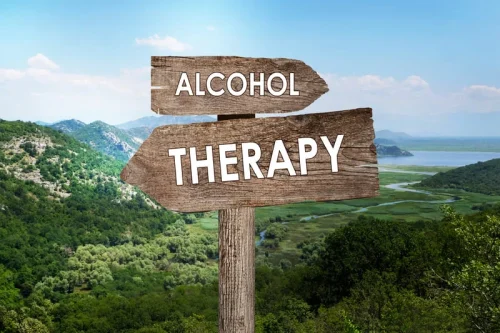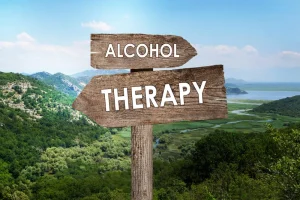
It also creates a sense of detachment from reality, which has made it popular among club-goers and ravers. Taking too much ketamine can increase your tolerance for it, making you need more of it to feel the same effects. This can lead to ketamine dependence which makes your body need the drug to function normally. At Ohio Community Health, you can address the psychological side of ketamine addiction with behavioral therapies like counseling and psychotherapy. Ongoing ketamine use will cause tolerance and physical dependence to develop over time, often but not always leading to addiction.
Speak to addiction Specialist 100% Free and Confidential

While ketamine overdoses are not strongly linked to death, consuming large amounts of this drug can be fatal. Ketamine addiction also makes it difficult for people to function as they normally do in their daily life and activities. If substance misuse disrupts work, school, and personal relationships, it can indicate a ketamine addiction. Because of its addictive nature, this drug is more commonly used in veterinary clinics to sedate animals.
The Basics of Ketamine Addiction

I’ve seen some questionable practices, like creating monthly membership programs and advising daily home dosing of ketamine in an ongoing manner. This sounds to me like advising daily, ongoing Xanax as a first-line treatment for everyone. Ketamine withdrawal is the range of physical and psychological symptoms experienced when a person stops or reduces prolonged ketamine use. Ketamine withdrawal symptoms arise as the body and brain attempt to readjust to functioning without the drug, leading to discomfort and a strong urge to relapse.
Ketamine Addiction: Signs, Symptoms, and Treatment

Chronic ketamine abuse can result in a state known as the “k-hole.” The popular recreational drug is misused in social settings, causing cravings and substance abuse. It’s crucial to be aware of the side effects of ketamine and seek help for those facing its misuse. Ketamine is a highly addictive substance because of its rapid and intense dissociative effects. Ketamine addiction develops quickly, leading to compulsive use as users seek to recreate the initial euphoric experience. Ketamine addiction if prolonged results in severe health impacts, including cognitive impairment, memory loss, urinary tract damage, and mental health issues like depression and anxiety. Ketamine, also known as Special K or a variety of other names, is a dissociative, short-acting anesthetic used in humans and veterinary practices.
- It is typically the first step in the treatment of substance abuse and addiction.
- As someone who is also in recovery, I wanted to provide hope, share lived experience, and support others on their journey.
- Chronic use of ketamine can lead to the development of tolerance, meaning that you need to take more of the drug to achieve the desired effects.
- In lower doses, it can relieve pain and has been used in hospital settings to control seizures and injury after stroke.
- Additionally, individuals may exhibit symptoms such as muscle stiffness, tremors, and difficulties with coordination, reflecting the drug’s impact on the nervous system.
- US Attorney Martin Estrada oversaw the case before resigning from his position in January.
Ketamine, initially approved by FDA in 1970, is a dissociative drug and anesthetic used in both human and veterinary medicine. Ketamine is a powerful medication that can be incredibly helpful in managing pain during surgery and even treating conditions like depression. It offers hope and relief for many people who struggle with these challenges. Ketamine has a number of desired and adverse effects on the mind and body, some of which can be dangerous.
- People who are high on ketamine may slur their speech, lose motor coordination, and move more slowly than usual.
- Ketamine abuse can cause symptoms of depression, irritability, and insomnia.
- Ketamine, like all Schedule III controlled substances, has a relatively low potential for addiction.
The « K-Hole » Experience

Ketamine (often nicknamed ‘special k’) is a dissociative drug, first synthesised in the 1960s as an anaesthetic. While ketamine can be highly beneficial in hospitals for patients experiencing severe pain, it has also found its way into the black market, now used recreationally ketamine addiction for its hallucinogenic effects. Prolonged ketamine abuse can lead to psychological addiction, marked by an obsession with and intense cravings for the drug. Clubbers may be looking for a mild mind-altering experience, which is why ketamine and MDMA are so commonly abused. While the drug is largely eliminated from the body within 14 to 18 hours after the last dose, it can also have longer-term effects.
Westwind Recovery®
- Regular counseling or therapy offers tools to manage cravings and emotional challenges, avoiding interactions with drug users and high-risk situations further reduces temptation.
- I’ve been working in the addiction and mental health field since 2013 and decided to enter the field after overcoming my own challenges with addiction.
- People may misuse ketamine for its hallucinogenic effects, which can include dissociation and altered perception as well as visual and auditory hallucinations in some cases.
- So while it can be a challenging conversation to have, it can also lead to your loved one getting the help they need.
- Spravato is a nasal spray indicated for adults diagnosed with treatment-resistant depression who are experiencing suicidal ideation.
Receiving 27 shots within a brief timeframe is ‘extremely dangerous,’ Wylie explains. « After approximately five shots, a person might experience notable dissociation, perceptual distortions, and cognitive impairments. » Drug dealer Jasveen Sangha – dubbed the ‘Ketamine Queen’ by authorities – and Dr. Salvador Plasencia both pleaded not guilty, but are accused of supplying Perry with the drugs that resulted in his death. Helping someone with ketamine dependency requires compassion and a drug addiction structured approach. Understanding their struggles, opening communication, and guiding them toward professional help are key steps. Recognizing the warning signs early can make a big difference in helping someone get the support they need.